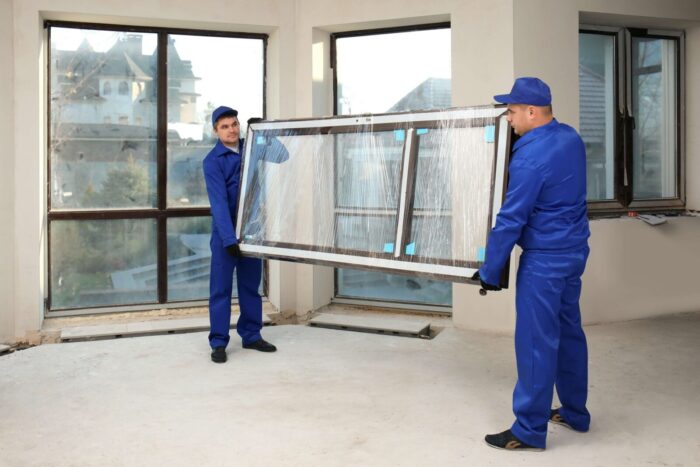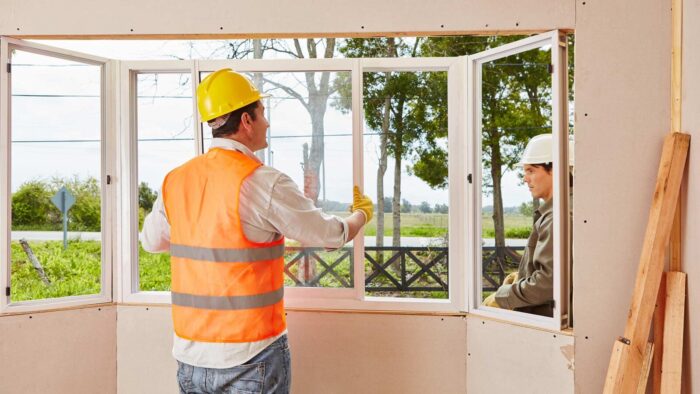
Building codes and regulations are a collection of rules established by local, national, or international authorities to ensure the safety, health, and overall welfare of the occupants of a building—residential or commercial—are safe and long-lasting venues for us to reside and work. There are guidelines on various aspects of construction, including architectural integrity and specific details like window and door installations. These sets of rules are formulated by experts abreast with the latest construction and technology trends. They call on past experiences and lessons learned from earlier mishaps and disasters to construct safer, robust structures.
Building codes and regulations serve as an integral part of the process of window and door installation. This is on account of windows and doors offering multiple functions beyond merely facilitating entry, and exit and providing natural light. They also have a role to play in a building’s insulation, energy efficacy, and safety measures during emergencies such as fire. For this reason, comprehension of and conformity with building codes and regulations for their installation are important. Non-compliance could result in structural, safety, or efficiency issues and could even lead to legal issues or fines. Consequently, individuals and construction firms need to be fully aware of these rules before initiating any window or door installation project.
Understanding Building Codes in Window and Door Installation

Specific building codes apply to window and door installation and must be closely followed. The size, location, and type of windows are all elements considered under building codes. Similarly, door dimensions, fire ratings, and the direction door swing are regulated by these codes. It is not unusual for homeowners or contractors to misunderstand building codes as flexible or negotiable. In truth, these codes are mandatory safety measures established to ensure that constructed buildings meet a minimum standard of safety.
Understanding Regulations for Window Installation
Window installation should be governed by specific regulations to ensure safety, durability, and performance. These regulations ensure correct sizing, appropriate location, proper usage of materials, and precise installation techniques. This dictates the minimum size for windows as a safe escape route in emergencies, how much light they should permit, and how much they must resist heat flow. These regulations also detail the type of glass to be used, with safety glass being used in certain conditions. Materials used for window frames and seals is another area covered by these regulations, to assure durability and performance.
Understanding Regulations for Door Installatio
The fundamental regulations for door installation touch on dimensions, materials used, design and the right installation procedures. For instance, doors integral to elements such as fire safety and accessibility, must comply with guidelines regarding their width, height and operation. Additionally, materials selected for door installations must meet or exceed necessary standards to prevent premature degradation and ensure durability.
Role of Local Authorities in Building Code
Local authorities play a vital role in overseeing codes and regulations. They have to make sure all construction in their jurisdiction adheres to a specific set of criteria designed to enhance safety, encourage energy efficiency, and improve the overall quality of built environments. Even though they have a universal primary objective, local codes can differ from international or national codes. This usually occurs due to varying regional environmental circumstances, cultural customs, and local materials necessitating different construction stipulations and methods. These variations are then reflected in the local building codes. The local authorities’ granting of permission for window and door installation involves a contractor or homeowner providing detailed construction plans, followed by several inspections during and after the installation process.
Impact of Building Codes and Regulations on Safety and Efficiency
Adhering to these codes and regulations is key to preventing unexpected accidents and threats to the building and its occupants. For instance, regulations about window installation usually include specifications for safety glazing, which guards against injury if the window is accidentally broken, and emergency escape and rescue openings, which are often necessary in bedrooms in case of fire. Likewise, door regulations typically dictate requirements for fire-rated doors in certain locations, enhancing overall building safety.
Building codes and regulations also make a significant contribution to the energy efficiency of a building. With a focus on sustainable development and energy conservation, these regulations often include specifications aimed at minimizing energy consumption. Regulations may demand the use of materials and designs that improve the thermal performance of windows and doors. This not only helps keep a comfortable indoor temperature but also lessens the need for artificial heating and cooling systems. Apart from energy conservation, it lowers energy bills, making buildings more cost-effective in the long run. Thus, strict compliance with building codes and regulations not only ensures the safety and well-being of the occupants but also paves the way for a more sustainable and energy-efficient future.

Building Codes and Regulations for New Installers
The sphere of building codes and regulations can seem overwhelming to those new to the industry, but understanding and following these guidelines is vital to the successful completion of any window or door installation project. The first step is to do your research thoroughly. Familiarize yourself with the specific codes and regulations relevant to each project. Always consult up-to-date resources, considering both international and local standards. Engaging with experienced professionals in the field, or hiring a certified inspector, can also provide valuable insights into the practical application of these codes.
These guidelines are put in place to ensure the safety and durability of structures, protect property owners, and are energy efficient. Therefore, whether you’re a seasoned professional or a new installer in the industry, staying informed and updated about changes in the rules and regulations is important. This enhances the quality of your service and brings peace of mind in knowing that the structures you work on meet or exceed standard safety measures.
















